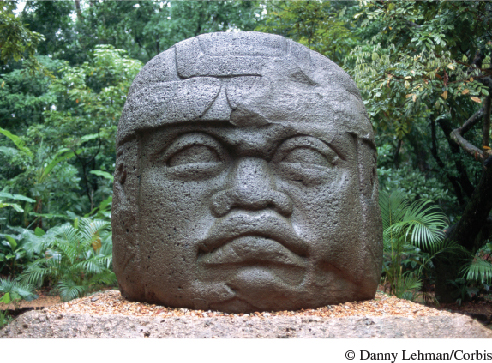The Grandeur of Kings

Yet another source of state authority derived from the lavish lifestyle of elites, the impressive rituals they arranged, and the imposing structures they created. Everywhere, kings, high officials, and their families lived in luxurious palaces or homes, dressed in splendid clothing, bedecked themselves with the loveliest jewelry, and were attended by endless servants. Their deaths triggered elaborate burials, of which the pyramids of the Egyptian pharaohs were perhaps the most ostentatious. Monumental palaces, temples, ziggurats, pyramids, and statues conveyed the imposing power of the state and its elite rulers. The Olmec civilization of Mesoamerica (1200–400 B.C.E.) erected enormous human heads, more than ten feet tall and weighing at least twenty tons, carved from blocks of basalt and probably representing particular rulers. Somewhat later, the Maya Temple of the Great Jaguar, towering 154 feet tall, was the most impressive among many temples, pyramids, and palaces that graced the city of Tikal. All of this must have seemed overwhelming to common people in the cities and villages of the First Civilizations.
PRACTICING AP® HISTORICAL THINKING
In what ways might the advent of “civilization” have marked a revolutionary change in the human condition? And in what ways did it carry on earlier patterns from the past?